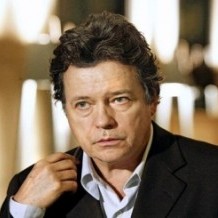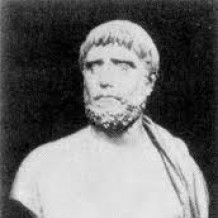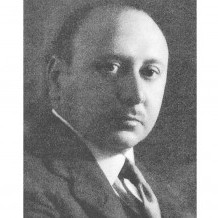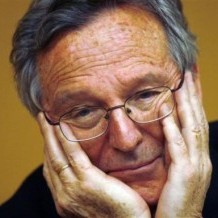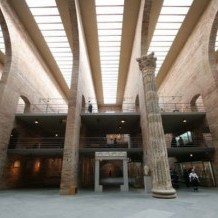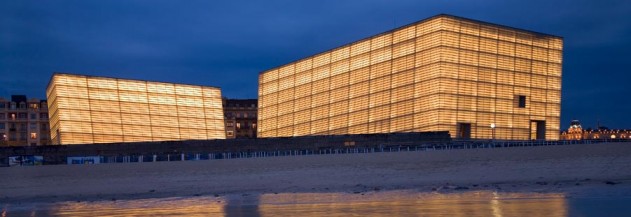- Germany 8
- Argentina 12
- Australia 1
- Austria 10
- Belgium 2
- Brazil 3
- Czech Republic 1
- Chile 2
- China 1
- Colombia 21
- South Korea 1
- Denmark 3
- Egypt 2
- Slovenia 1
- Spain 199
- Finland 3
- France 20
- Greece 4
- Holland 7
- Hungary 1
- India 1
- Iraq 1
- Ireland 1
- Italy 28
- Japan 11
- Mexico 15
- Norway 1
- Netherlands 2
- Peru 0
- Poland 3
- Portugal 5
- Puerto Rico 2
- UK 20
- Russia 1
- Syria 1
- Sri Lanka 1
- Sweden 4
- Switzerland 10
- Turkey 1
- Uruguay 1
- USA 48
- Venezuela 1
Famous Architects - Rafael Moneo – Biography
BIOGRAPHY.
José Rafael Moneo was born in the small town of Tudela, Navarre, Spain, the 9 May 1937.
His mother, Teresa, was the daughter of a judge of Aragon. His father, Rafael, whose family roots were in Tudela, worked there all his life as an industrial engineer. He has a sister, Teresa, he studied pTeresaphy and literature. His late brother, Mariano, studied engineering.
Moneo confesses that as he grew, first was attracted to the philosophy and painting, he did not have a clear mission to be an architect, but attributes his inclination towards architecture by his father's interest in the topic. Not without some difficulty, left their close family ties in 1954 to go to Madrid to study architecture.
He qualified as an architect in 1961 at the School of Architecture at the University of Madrid. He credits his professor of architectural history, Leopoldo Torres Balbás the influence largely brought us. While still a student, worked with the architect Francisco Javier Sáenz de Oiza. Moneo said:
“I wanted to be an architect in the same way that Oiza, with all the enthusiasm professed by him in his work.”
When he completed his studies Moneo, fue a Hellebaeck, Denmark, to work with Jorn Utzon,” whom I saw “, Moneo says,” as the legitimate heir of the great masters of the heroic age“. Utzon was working on the design of the Opera House in Sydney Australia. Before returning to Spain in 1962, Moneo says, “Traveled around Scandinavia, where I was fortunate enough to be received by Alvar Aalto in Helsinki.”
Once back in Madrid, Moneo won a competition to fill one of the seats in architecture from the Academy of Spain in Rome, Italy. He was able to combine your trip to Rome with a honeymoon with his new wife, Bethlehem Feduchi, daughter of architect Luis Feduchi. “It was wonderful“, Moneo says, “be in Rome, her, a person who shared my enthusiasm for architecture without an architect.” Under a two-year scholarship, stayed in the Spanish Academy in Rome, a period he calls “fundamental to my career. Allowed me to study, travel, visit schools, Zevi know, Tafuri, Portuguese, and other, but mostly, to have an understanding of the big city was a great impact on my training as an architect. Life in academia allowed us to establish great friendships with musicians, painters and sculptors“. This period of his life had a great influence on his later work.
On his return to Madrid in 1965, settled in a home studio in Madrid's El Viso and were blessed with their first child, Nativity scene. That same year, He received his first major, Diestre design Factory in Zaragoza. The following year, began teaching at the School of Architecture at the University of Madrid, and the publication of articles on architecture. During those years, actively participated in the meetings of the architects who called “Small Conferences” which were attended by the most active Spanish architects. Among them were Carlos de Miguel, Oiza, Molezún, Corrales, Garcia de Paredes, Madrid etc., Oriol Bohigas and, Federico Correa, Tusquets, Clotet, Bonet, Barcelona etc.. Other foreign architects who attended, Alvaro Siza of Portugal as, Aldo Rossi of Italy, (both of which were later awarded Pritzker), Peter Eisenman and U.S. and Gregotti. From these meetings, Moneo says, “a new phase of life in Spain began architectural“.
In 1968, received his second major commission, Urumea Project, an apartment building in San Sebastián. It was also the year of the birth of his second daughter, Teresa. His third daughter, Clara Matilda, His birth in 1975.
He describes this period in his own words: “Life in schools during those years was difficult, Student agitation 1968, and political instability during the last years of Franco, helped make the poor academic. It was a battle trying to get students understood the architecture as interesting, but this has been changed slowly. It was during this time that a group of architects, Architecture magazine founded Bis, where many of my writings were published”.
In 1972 Chair won the Elements of Composition in the ETSAB, which led him to live for almost ten years in Barcelona.
In 1973 Moneo had established his own office in Madrid, since by combining an equal architectural design education. In both activities denounced modern trends to create buildings with short-term criteria, and defended the design of existing works that can be maintained for a long time, by way of monuments. In line with what has been called contextual rationalism, Moneo not follow the current European utilitarianism and expressionism, but reflects in his works a smoothed version of the Nordic style and tradition Dutch. To all this, Moneo adds his own vision of the historic architecture. The works of the years 60 is that better reflect these ideas
In 1974, received his first commission for a job in Madrid, el edificio de Bankinter Office, llevó out in collaboration with Ramon Bescós. Shortly after, was commissioned to design the city of Logroño. “These two works enabled me to articulate the architectural vision“, Moneo says. In 1976 Moneo was invited to the United States as a visiting professor for a year at the Institute for Architecture and Urban Studies and teaching in the School of Architecture at Cooper Union, in New York. “The experience for the whole family was deeply marked our lives, with exhibitions, conferences, concertsand“. During the following years also taught at Princeton and Harvard, and in the Department of Architecture at the Ecole Polytechnique Federale de Lausanne (Switzerland).
When they moved to Madrid, they were fully absorbed by life there. His wife, Feduchi Bethlehem played a major role in the activities related to his founding of BD Madrid, a company dedicated to the design and promotion of contemporary furniture.
It was during this same period, late seventies and early eighties, he became a visiting professor in architecture schools both Princeton and Harvard universities, and University of Lausanne, Switzerland.
In 1980 obtained the chair as professor in the School of Architecture of Madrid for five years. Then, was commissioned by the Museum of Roman Art in Merida. Two years later, Building the forecast Spanish in Seville would also become your project.
In 1984 Moneo was appointed Dean of the Department of Architecture at the Graduate School of Design at Harvard University, a position he held until 1990. He and his family moved to Cambridge, where he lived for five years.
During this time, Moneo Gropius gave a lecture on 1990, in which he spoke of his views on American architecture. One of his principles was, “It is not possible today to present a single definition of architecture. Today's understanding of the architectural concept, as it might be with the concept of painting or sculpture, includes not only what architecture was before, but also includes many other attempts marginal and not so marginal to respond architecturally to different circumstances.”, What led him to explore the concepts of necessity and contingency in architecture. He noted that a field that is required in the city's architecture, “where the architecture used to manifest all its glory, where still urgently needed discipline”. While lamenting the fact that those who care about architecture have greatly reduced.
In an earlier conference at Harvard Kenzo Tange, Moneo spoke that architecture had lost the importance it had in the past society, saying: ” Victor Hugo said that books had killed the architecture, that was not entirely true then, but nowadays seems that we can say that the mass of the media reduced the significance of the architecture”. Indeed, he's pointing to the fact that architecture is no longer vital. He encouraged his students to be ” those responsible for buildings”.
Insists that the buildings are not “the result of a process or a drawing materialization” definitely not the exclusive property of the architect. “Once completed“, continued, “buildings take on a life of its own. Of all the visual arts or plastic, architecture is probably one in which the distance between the artist and his work is the largest… architecture involves the distance, so that in the end the work is left alone, freestanding… a work of architecture, if successful, can delete the architect“.
While at Harvard, traveled to Spain almost every month to develop the project Atocha station he won in a contest, almost simultaneously with his university appointment. He said: “The years at Harvard were intense, especially for someone like me, who has devoted much of his professional life to teaching”. Although he would have liked to extend his stay at Harvard, preparations for the celebration of Spain ` 92 new projects brought for study: San Pablo Airport in Seville, remodeling Villahermosa Palace to house the collection of Thyssen-Bornemisza Art, and the building in Barcelona Diagonal, the latter a collaboration with Manuel de Sola-Morales.
Back to Spain 1990, with all these new projects, moved his studio from his home to a separate building about 500 distance meters. He won two other contests projects: Concert Hall Cultural Centre Kursaal San Sebastian and the Museum of Art and Architecture in Stockholm. During these years, his late brother, joined the company that performed the structural calculations of many of its projects.
His ties to Harvard University continued following his appointment as professor at 1991, teaching there for two weeks each semester.
Moneo activities in teaching have spread to numerous symposia and conferences in impertidas, among other institutions in the United States, the universities of Chicago, Columbia, Princeton, Yale, Tulane, Rhode Island School of Design, in England, en la Architectural Association School y los Reales Institute of Architects en Londres, and the University of Cambridge, Faculty of Architecture, and Japan at Nihon University, Academy of Fine Arts Vienna, Austria, Royal Academy of Copenhagen, Denmark, Louvre Museum in Paris, France, and Pontifical University of Chile, in Santiago.
At the same time, Moneo has developed extensive work as a critic and theorist of architecture. Most of the texts were first published in "Oppositions" and magazines like "Lotus" and "Architecture Bis".
Among other works not mentioned in Spain are as follows: the headquarters of the Bank of Spain, Jaén (1982-88); Projects in Madrid, as the Architectural Association of Tarragona building (1983-92). In Palma de Mallorca (1987-1992), el Pilar y Joan Miró Foundation, in Barcelona the Refectory of the Monastery of Santa Maria de Guadalupe (1991-94).
Moneo says “The site belongs to Architecture. The architecture should be appropriate, which means it must somehow recognize the attributes of the place. Understanding what these attributes are, hear how they manifest, this should be the first move of the architect to start thinking about building”.
In 1992 Rafael Moneo was awarded the Gold Medal for Merit in Fine Arts from the Spanish Government, and was made an Honorary Doctorate from the University of Leuven, on February 1993. In May 1993 Rafael Moneo received the Arnold W. Brunner Memorial Prize in Architecture from the American Academy of Arts and Letters, and in June 1993, Prince of Viana Prize of the Government of the Province of Navarre (Spain). In November 1993 was awarded the Schock Prize 1993 in the Visual Arts Schock Foundation and the Royal Academy of Fine Arts in Stockholm. In April 1994 received an honorary Laurea School of Architecture in Venice.
Moneo is a member of the American Academy of Arts and Sciences and the Academia di San Luca di Roma. He is an honorary member of the American Institute of Architects and the Royal Institute of British Architects.
In 1996 is awarded the Pritzker Architecture Prize and the Gold Medal of the French Academy of Architecture and the Gold Medal of the International Union of Architects.
En 1997 was named Academic of the Real Academia de Bellas Artes de San Fernando in Madrid and received the title of Honorary Doctor of Technology Royal Institute of Technology in Stockholm. En 1998 recibe and Feltrinelli Prize from the Academia Nazionale dei Lincei, and Roma. He is a member of the American Academy of Arts and Sciences, Academy of Saint Luke in Rome and the Royal Swedish Academy of Fine Arts. From 2007 also a member of number of Jakiunde, Academy of Sciences, of Arts and Letters of the Basque Country. Is an honorary member of the American Institute of Architects and the Royal Institute of British Architects. Moneo says look with durability and architectural dialogue with the historical evolution. According to the architect Moneo belongs in every age find the elements and transform models to suit the needs of the times that elapse. Moneo is still considered by many people one of the great contemporary Spanish architects. En 2001 Wins Mies van der Rohe Award. En 2012 is awarded the Prince of Asturias Award for the Arts.In
AWARDS AND awards.
Among the numerous awards and honors earned by Rafael Moneo, some already mentioned in his biography, then we will mention those most relevant:
- 1991 – National Architecture Award, Fernando Higueras with the draft Restoration Center Artistic (Madrid).
- 1996 – Schock Prize, awarded by a committee of the Royal Swedish Academy of Visual Arts.
- 1996 – Pritzker Prize.
- 1996 – Gold Medal of the International Union of Architects.
- 2001 – Prize for Contemporary Architecture Mies van der Rohe.
- 2003 – Medalla de Oro del Royal Institute of British Architects (RIBA).
- 2006 – Gold Medal of Architecture (CSCAE).
- 2012 – Prince of Asturias Award for the Arts.
Major Projects.
During his career are many works and projects throughout his entire career, here just pick the most significant made.
His work was extensive and included performances as;
- House Gómez Acebo, La Moraleja (Madrid) (1966)
- Building Urumea, San Sebastián (1969-1973)
- Housing Paseo de la Habana No.. 71, Madrid (1971)
- Expansion of headquarters Bankinter, Paseo de la Castellana (Madrid) (1972-1976), along with Ramon Bescós, considered one of his first works transcendental, combining ancient and modern.
- Logroño City Council (Logroño, Spain) (1973-81)
- National Museum of Roman Art (Merida) (1980-85).A prominent integration between the ancient world and contemporary architecture. In the heart of the Roman Merida stands this museum and study center of Roman art.
National Museum of Roman Art. Merida.
- Building of the Spanish outlook (Seville, Spain) (1982-1987)
- Former headquarters of the Bank of Spain Jaén, (Jaén, Spain) (1983-1988)
- Atocha Railway Station (Madrid) (1985-88). Rafael Moneo faced the first reform of the Atocha station opened in 1992 for the first AVE to Sevilla and is also responsible for the final. “We did not want to do a performance that the previous desvirtuara. This was to increase capacity without changing much in form, but not so far as to use the same materials ".
Atocha Railway Station.
- L'illa Diagonal Building on Avenida Diagonal (Barcelona) (1986-93)
- L'Auditori (Auditorium Concert) (Barcelona) (1987-99)
- Fundació Pilar i Joan Miró, (Palma de Mallorca) (1987-1992)
- New San Pablo airport terminal (Seville, Spain) (1989-92)
- Palacio Kursaal Auditorium and Congress (San Sebastián, Spain) (1990-99). His “Cultural Center and Auditorium Kursaal” en San Sebastián, Moneo described as an intermediary between the natural and the abstract, in the line of thought oteiciano, aroused the interest of critics; posed by the turn in the work of architect navarro. A work which involved numerous conflicting reviews the architect, An error caused the collapse during construction of the grand staircase of the main building (fortunately no casualties). It has become, after, an icon of the city. This building-complex is a more successful attempt to harmonize its geographical, the river mouth and beach Urumea Zurriola, in the Cantabrian, with contemporary architecture.
Palacio Kursaal Auditorium and Congress.
- Museum of Modern Art and Architecture (Stockholm) (1991-98)
- Ayuntamiento de Murcia (Murcia, Spain) (1991-98)
- Bodegas Julian Chivite, (Estella, Spain) (1991-2002)
- Museo Thyssen-Bornemisza, Villahermosa Palace (Madrid) (1992)
- Real Hospedería Eater (Guadalupe, Spain) (1993-94)
- House of Culture (Don Benito, Badajoz, Spain) (1998)
- Audrey Jones Beck Building, Museum of Art (Houston) (1992-2000)
- Maternal Hospital Infantil (Maternity O'Donnell), (Madrid) (1996-2003)
- Cathedral of Our Lady of the Angels (Los Angeles) (1996-2002)
- Campus Library Arenberg KU Leuven University (Leuven,Belgium) (1997-2002).
- Museum of Science (Valladolid) (2001), with Enrique de Teresa.
- Renovation and expansion of the Archivo General de Navarra, (Pamplona) (2003)
- Art and Nature Center Foundation Beulas, (Huesca) (2006)
- Prado Museum extension (Madrid) (2007). The surroundings of Madrid's Paseo del Prado privileged witness of the work of architect navarro. Rafael Moneo in this area has left three of his mature works most representative of a part of his thinking: transformation Villahermosa Palace to house the Museo Thyssen-Bornemisza, the expansion of the Bank of Spain (controversial action by the mimicry formally employed by Moneo) and expansion of the Museum Prado.Las three works mentioned have been welcomed by public administrators and the general public, but have moved away from the cutting edge work discipline to which he belonged in the years 80. The Prado Museum extension was the result of a second competition, after an international competition whose prize was not awarded.
Prado Museum extension. Madrid.
- Seat of the Government of Cantabria in Puertochico (Santander) (2007)
- Rehabilitation and Roman Theatre Museum in Cartagena, (Cartagena, Spain) (2008)
- New Library of the University of Deusto – CRAI (Bilbao) (2009)
- Toledo Convention Centre (Inauguration 2009)
- Building Aragonia, (Saragossa)
- See Guadiana River Basin, Merida (2009)
- Theater (Basel, Switzerland)
- Grand Hyatt Hotel and Offices (Berlin)
- Edificio Potsdamer Platz Hotel y Office Building (Berlin)
- City of Amsterdam (Ámsterdam)
- Baltasar Lobo Museum at the Castle of Zamora
- Beirut Souks (Beirut, Lebanon) (2010)
- Church of Jesu (San Sebastián).
- Contemporary Art Museum of the University of Navarra.
BIOGRAPHY AND INTERESTING LINKS.
- http://www.rtve.es/alacarta/videos/elogio-de-la-luz/elogio-luz-rafael-moneo-coraje-conviccion/1525590/
- http://www.gsd.harvard.edu/#/people/rafael-moneo.html
- http://www.pritzkerprize.com/laureates/1996
- http://rafael-moneo.mr926.me/
- http://arquitectospritzker.blogspot.com.es/2012/02/jose-rafael-moneo-valles.html
- http://spa.archinform.net/arch/319.htm
- http://www.march.es/videos/?p0=90&l=1
- http://www.epdlp.com/arquitecto.php?id=113
- Rafael Moneo 1967 – 2004.
- Rafael Moneo. Notes on 21 works.
- AV Monographs 36. Rafael Moneo 1986 – 1992.
- DA. Architecture Documents 34. Rafael Moneo.







